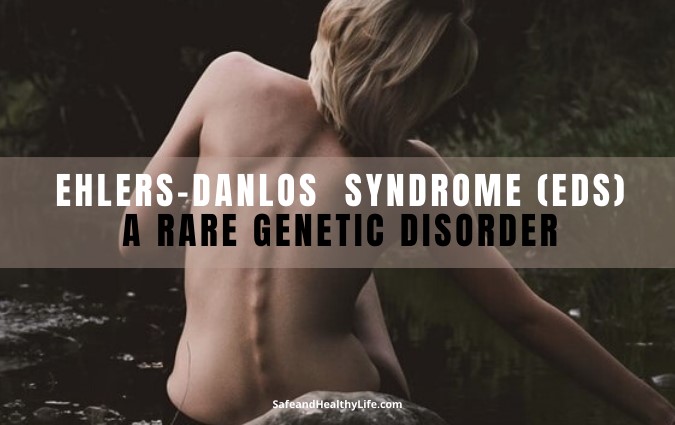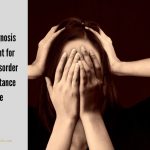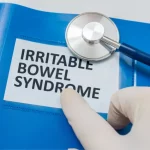What is Ehlers-Danlos Syndrome (EDS)?
In most cases, Ehlers-Danlos Syndrome (EDS) is a hereditary disorder affecting the connective tissues (like ligaments and tendons) that supports the blood vessels, skin, bones, other organs, and those that hold the other parts of the body together.
The connective tissues are the ones responsible for the elasticity and strength of the underlying structures of the body.
Individuals affected with EDS, the skin appears to be so thin and easily bruised.
Their joints are noticeably loose. For some, they have defective connective tissues on the walls of the blood vessels and linings of other vital organs in the body.
SYMPTOMS The symptoms of EDS are based on defective connective tissues. People can be affected by EDS in different ways.
Results of damage may vary from mild to severe life-threatening conditions. The most common forms of EDS symptoms include:
- Fragile Sensitive Skin
The skin of an individual with EDS is so thin, fragile, and easily breaks or bruised. It lacks the ability to heal well or healing may take some time.
- Highly Stretchable Skin
The person has thin, velvety, and soft skin. It is highly stretchy that it can be pulled much more than the usual due to the weakened connective tissues.
- Excessively Flexible, Loose Joints
The joints can freely move much farther than the normal range of motion due to the looser connective tissues that hold it together. Some joint dislocations and pains are also common in EDS.
TYPES The different types are classified according to the descriptive names based on the major features of the EDS symptoms.
Each type of EDS affects different parts of the body. However, there is one common symptom for all types of EDS – the “hypermobility.”
Hypermobile EDS (hEDS)
An unusually large range of motion of joints. Without pain, the person can extend their joints more easily beyond the normal range.
Infants and children with a hypermobile type of EDS have weaker muscle tone which delays motor skills development like standing, sitting, and walking.
People with hEDS have these following characteristics:
- Fragile skin that bruises easily
- Chronic joint pain and clicking joints
- Loose, unstable joints that dislocate easily
- Chronic fatigue
- Upon standing up, feeling dizzy and fast heart rate
- Digestive problems, like constipation and heartburn
- Bladder problems, like incontinence
- Internal organ problems like mitral valve prolapse
Classic EDS (cEDS)
People who have the Classic Ehlers-Danlos syndrome usually have velvety and soft skin that is extremely fragile and elastic. Affected individuals are bruised easily, and some types of the condition may also cause abnormal scarring.
People with cEDS may display these symptoms:
- Hypermobility of joints
- Fragile skin that splits easily, particularly over the forehead, elbows, shins, and knees
- Loose, unstable joints that dislocate easily
- Slow healing of wounds that may leave wide scars
Classical-like EDS
In addition to the common symptoms of EDS when it comes to skin type and joints conditions, classical-like EDS has these symptoms:
- Chronic joint pain
- Low muscle tone
- Chronic muscle pains
- Chronic fatigue
- Weakness in the upper arm and upper leg muscle
- Degeneration of skeletal muscle
- Nerve damage
Vascular Type (vEDS)
The vascular type of Ehlers-Danlos syndrome is known to be a severe and more fatal type. Patients have a high risk of unexpected or sudden arterial or other organ ruptures.
People who are affected by this type of syndrome have these noticeable facial features – large eyes, small earlobes, thin nose, and thin upper lip. The skin is translucent, very thin, and bruises easily.
People with vEDS may have these other symptoms like:
- Hypermobility in fingers and toes
- Delayed healing of wounds and some varicose veins
- With translucent thin skin, the legs and upper chest may display very visibly the underlying small blood vessels
- Serious internal bleeding may occur due to fragile blood vessels that may easily tear or bulge
- High risk of organ problems like weakening of the largest artery (aorta) of the heart, partial collapse of the lung, tearing of intestines, and rupture of uterus in late pregnancy, which may result in internal bleeding and other possible fatal complications.
Kyphoscoliotic Type (kEDS)
Children with this type appear very limp due to poor muscle tone. Late motor skills development is also observed.
People with this type of EDS display severe curvature of the spine and over time may cause a problem with breathing due to the lung expansion restriction. Kyphoscoliotic EDS (kEDS) is very rare.
People with kEDS may have the following symptoms:
- Fragile eyes that may be damaged easily
- Velvety, soft, and stretchy skin that bruises and scars easily
- Joint hypermobility
- Unstable, loose joints that dislocate easily
- Curved spine – starts in early childhood and worsened in the teenage years
- From childhood, weak muscle tone (hypotonia) – causes a delay in sitting and walking. If the symptom gets worse, it may result in difficulty in walking
Dermatosparaxis Type (dEDS)
This is a classical form of Ehlers-Danlos syndrome characterized by extremely sagging and fragile skin.
The skin of the individual is soft and doughy that is too fragile and easily bruised. The person of this type usually experiences split-open wounds with little bleeding leaving a scar that widens over time.
Cardiac-Valvular Type (cvEDS)
Another severe type of Ehlers-Danlos syndrome. This causes severe damage to the valves responsible for the movement of the blood through the heart accompanied by the more commonly observed EDS symptoms – overly flexible joints and stretchy fragile skin.
Arthrochalasia Type (aEDS)
The joints are loose, unstable, and more prone to dislocation. The person experiences chronic pain in this type of EDS. Children affected by this type of EDS are hypermobile with hyperextensible fragile skin and bilateral hips dislocation at birth.
Brittle Cornea Type (BCS-EDS)
A type of Ehlers-Danlos syndrome characterized by thinning of the outer protective layer of the eyes (cornea) and other abnormalities of the eye. This makes the cornea so fragile and prone to rupture which may eventually lead to blindness.
Periodontal Type (pEDS)
This is the rarest type of Ehlers-Danlos syndrome. It is characterized by gums and teeth abnormalities. Serious gum inflammation (periodontitis) will eventually result in the loss of teeth.
Spondylodysplastic EDS (spEDS)
Aside from the usual soft, translucent, and thin skin; hypermobility joints; delayed cognitive and motor development; and unusual facial features, the spondylodysplastic EDS has two major symptoms – the short stature and weak muscle tone resulting to permanent contractures (bowing limbs).
Myopathic EDS
A rare systemic disorder characterized by hypermobility of distal joints like hands, wrists, feet, and ankle; proximal joint contractures like elbow, hip, and knee; congenital muscle hypotonia (low muscle tone) and/or muscle atrophy (loss of muscle tissue).
Musculocontractual EDS
Some symptoms of this syndrome type may include – highly flexible, thin, fragile, easily bruised skin; delayed wound healing; joint hypermobility; acutely malnourished build; and severe muscle deformities like adducted thumbs and clubbed foot.
CAUSES Ehlers-Danlos syndrome is a result of spontaneous gene mutation whether inherited or not. Defective genes weaken and affect the process and formation of the connective tissues. Sometimes, parents are silent carriers of the defective gene and may manifest no symptoms.
TREATMENT Currently, there is still no cure for any type of EDS. Treatment is mainly focused on the management of the symptoms and on the prevention of other serious complications. For damaged joints, surgery is performed. Some medications may be prescribed also to minimize the pains.
About The Author:
Carla Smith is the founder of SafeandHealthyLife.com. Her main objective is to provide informative articles, reviews, and analysis of health & fitness topics to her readers that help them to make their life easier and happier. Connect with her on Twitter.



